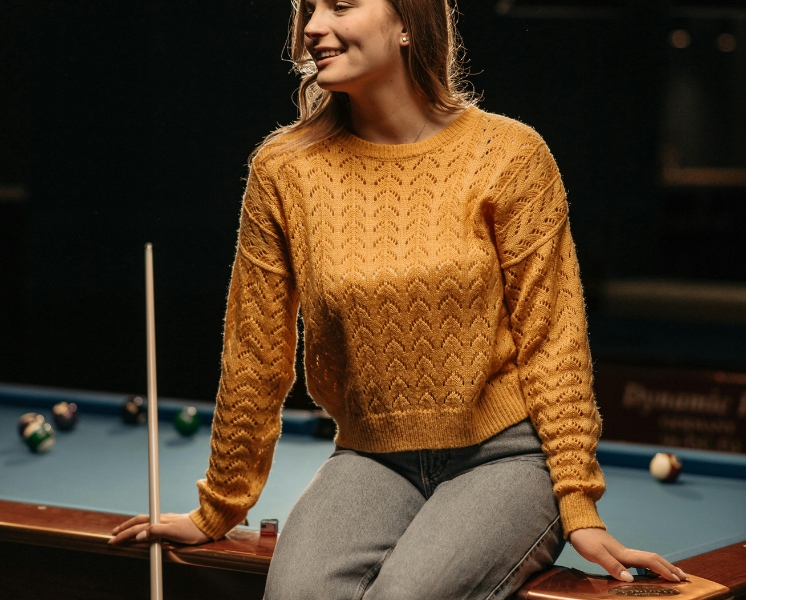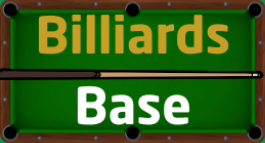You don’t want any doubt that you’re holding your pool cue correctly when playing a game of pool. Holding your pool cue correctly is crucial for accuracy and consistency, so it’s important to address any issues with your grip quickly.
There are many mistakes beginners make that are very common and, fortunately, easy to fix. Whether you’re a novice or a player looking to refine your technique, mastering your pool grip is a foundational skill. You’ll master the basics in no time, starting from now!
Why Properly Holding a Pool Cue Matters
Holding a pool cue properly matters more than you think, for multiple reasons. Correct pool cue grip:
- increases shot accuracy and consistency
- prevents unnecessary tension in your hand and wrist
- reduces the risk of making basic mistakes like miscuing
Properly holding a pool cue increases shot accuracy
If you want laser-sharp accuracy, make sure you’re holding your cue right! It has to do with biomechanics.
When you properly grip the cue, you stabilize it, ensuring it stays aligned with your intended shot path. If your grip is too loose, the cue can end up ‘gliding’ as you take the shot, causing it to be off-aim.
Correctly holding a pool cue prevents wrist tension
If you’ve ever woken up after Thursday league with a sore wrist – you’ve got some grip issues.
When you grip the pool cue too much, you end up causing the muscles to be fatigued, as well as preventing your stroke from being smooth. Don’t squeeze the life out of it!
Solid pool cue grip prevents miscuing
Is there anything more embarrassing than miscuing? It’s an L you can avoid.
When you use a stable bridge and firm pool cue grip, your shots will hit their intended path every time. If you’re experiencing miscues, it’s a sign that something is wrong with either one of those two things, or your stroke.
Step-by-Step Guide to Holding a Pool Cue

1. Find the Correct Hand Placement
Finding the correct hand placement when gearing up to take a shot is crucial. You can identify the correct hand placement by:
- Placing your non-dominant hand on the table to create a bridge
- Position the cue between your thumb and index finger for a loose but firm grip
- Take your shot, ensuring the cue glides across your bridge while making full contact with the ball.
Here’s a great demonstration of setting up your bridge:
2. Master the Open Bridge
The open bridge is the most common type of bridge, and here’s how it works:
- Spread your fingers flat on the table to form a stable base.
- Place the cue stick in the groove between your thumb and index finger.
- Adjust the angle for smooth gliding during shots.
You should keep in mind that there are times to use an open bridge vs a time to use a closed bridge. As you become more familiar with the game and with shotmaking, you’ll learn how to read certain situations and decide between which bridge type you should use.
3. Adjust for a Closed Bridge (Optional Technique)
Certain situations in pool call for a closed bridge technique to be used. To use a closed bridge for a shot, you should:
- Curl your index finger over the top of the cue stick to secure it.
- Form a loop with your index finger and thumb for better control.
- When taking your shot, try to make sure the cue doesn’t ‘snag’ on any part of your finger that’s resting on the top of it, and take care that you can strike the cue ball true and with full contact while using the method.
The Perfect Grip: Dos and Don’ts

Dos for a Proper Grip
The general ‘dos’ for a proper pool grip are:
- Hold the cue stick loosely, but with enough control to avoid slipping as you take the shot.
- Keep your wrist relaxed to allow smooth movement.
- Position your grip hand approximately 6-8 inches from the butt of the cue for balance.
By simply making sure these three become a habit, your pool cue grip will greatly improve!
Don’ts to Avoid
The ‘don’ts’ to avoid when it comes to your pool cue grip are:
- Gripping the cue too tightly – this causes a loss of control and nearly always a poor shot.
- Flexing your wrist or forearm during a shot – you’ll fatigue your muscles for no good reason!
- Gripping too far forward or too far back on the cue, completely eliminating any stability you could have had.
Avoid these habits like the plague and your pool cue grip will be better than most.
Common Mistakes Beginners Make
There are plenty of common mistakes that beginners make with their pool cue grip. Fortunately, all of these mistakes are easy to fix with a bit of patience.
Here are the most common pool cue grip mistakes beginners make, and why they cause issues.
You Might Like: Are Carbon Fiber Cues Worth the Hype?
1. Gripping Too Tight
Gripping too tightly will kill not only the accuracy of your shot, but its motion too. Typically, pool shots taken with a grip too tight are jerky and land no where near their intended target.
Running practice drills that are centered around loosening your grip will help fix the problem, but you need to be patient with it until it becomes muscle memory. Get regimented with it if you expect it to work!
2. Improper Bridge Hand Placement
An improper bridge hand placement will reduce the stability of your shot, resulting in wild misses and embarrassment as you walk away from the pool table in shame.
It’s a common mistake for players to place their fingers too close to the cue ball or at awkward angles. Observe your bridge the next time you play and ask yourself if it’s as effective as it could be.
3. Lack of Follow-Through
A smooth follow-through motion with your cue after hitting the ball is important. That follow-through adds a little bit more certainty that the cue ball follows the path you intended. If you’re having trouble giving a stroke follow-through, then you might have some issue with the length your pool cue is.
When taking your shot, try to make sure your cue extends after the ball for a couple inches after the moment of contact. You’ll be surprised how much more accurate your shots become!
Practice Drills to Improve Your Grip

Straight Line Drill
The straight line drill helps improve your stroke accuracy while maintaining a loose grip. To do the straight line drill:
- Place the cue ball at one end of the table and aim at the opposite rail.
- Hit the cue ball straight into the rail, aiming to have it return to your cue tip in a straight line.
- Focus on a light grip and a smooth follow-through.
Follow-Through Drill
The follow-through drill helps you to extend the cue further after taking a shot, which will have a marked improvement on your accuracy. To perform the follow-through drill:
- Place a chalk cube a few inches past the cue ball.
- Practice hitting the cue ball and allowing your cue to glide over the chalk.
In doing this, you will be ensuring your pool stroke is more fluid and intentional, leading to much more success with shotmaking!
Feather Stroke Drill
The feather stroke drill is intended to loosen your grip by repeatedly practicing smooth, fluid strikes without making any contact. To do this drill:
Set up your cue ball without aiming for a pocket.
- Take slow, deliberate strokes without hitting the cue ball.
- Concentrate on how the cue feels in your hand, ensuring your grip is light and your wrist is relaxed.
- Repeat until your stroke feels natural and free of any tension.
3. The Accuracy Test
After performing the Straight Line Drill, Follow-Through Drill, and Feather Stroke Drill, you should take on the “Accuracy Test”. Very creatively named, we know.
In the Accuracy Test, you’ll line up the balls along the table, practicing hitting them into pockets from different angles. In this drill, you’ll be trying to pot every ball in as few shots as possible. While it’s a great test for improving your shotmaking abilities, it’s also great for ensuring you remain disciplined with proper pool cue grip.
When performing the Accuracy Test, take note of any shots where your grip and bridge seem to worsen, and take note of how that affects your shots.
If you’ve got the equipment, we’d always recommend recording yourself performing drills such as the Accuracy Test. Recording your drills gives you the option to review footage and analyze mistakes later, allowing you to focus purely on the drill while you’re doing it.
Advanced Tips for Improving Your Grip
Experiment with Different Grips
Experimenting with different grips can be a great way to improve your grip over time, as it gives you more certainty over the particular type of grip to employ in a particular situation.
Advanced pool players will adjust their grip pressure for power shots vs. finesse shots, and you should be patient before being able to see which shot the situation calls for yourself.
As you’re playing and practicing, try to test different hand positions to find what most feels natural. The more you experiment and practice, particularly with players better than yourself, the more you’ll improve!
You Might Like: Best Pool Cue Cases
Observe Professional Players
As you’d expect, there’s a lot to learn from professional pool players. Watch tournament videos to study pros’ grips and bridges, analyze how they maintained consistency during high-pressure shots.
The more you immerse yourself in the world of pool and how the very best players have done things over the years, the more you’ll soak in and (eventually) apply to your own games.
Mastering Your Pool Cue Grip
Mastering your pool cue grip improves accuracy and consistency of your shot. You should treat it as a fundamental part of your game that should be focused on until it’s perfect above all else.
By practicing the various drills centered around pool cue grip, and watching how professionals do it will help you improve over time. Once you’ve got the basics around pool cue grip down, you’ll be able to experiment with more advanced techniques depending on which shot you’re faced with.
FAQs About Holding a Pool Cue
How tight should I hold a pool cue?
- Hold the cue loosely enough to allow smooth movement but firmly enough to maintain control.
Is it better to use an open or closed bridge?
- It depends on the shot. Open bridges are versatile, while closed bridges offer more stability for precise shots.
Where should I position my grip hand?
- Place your grip hand 6–8 inches from the butt of the cue, depending on the shot.
